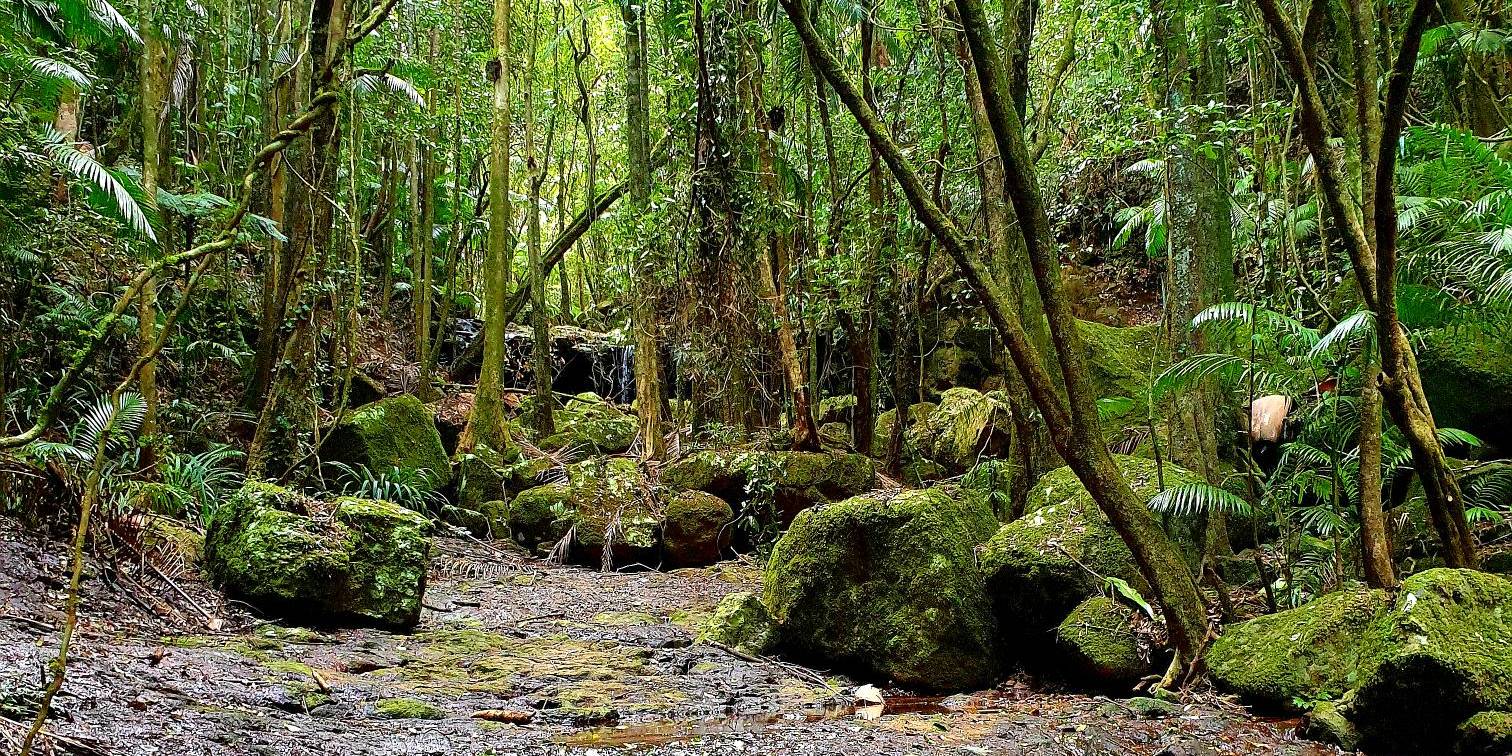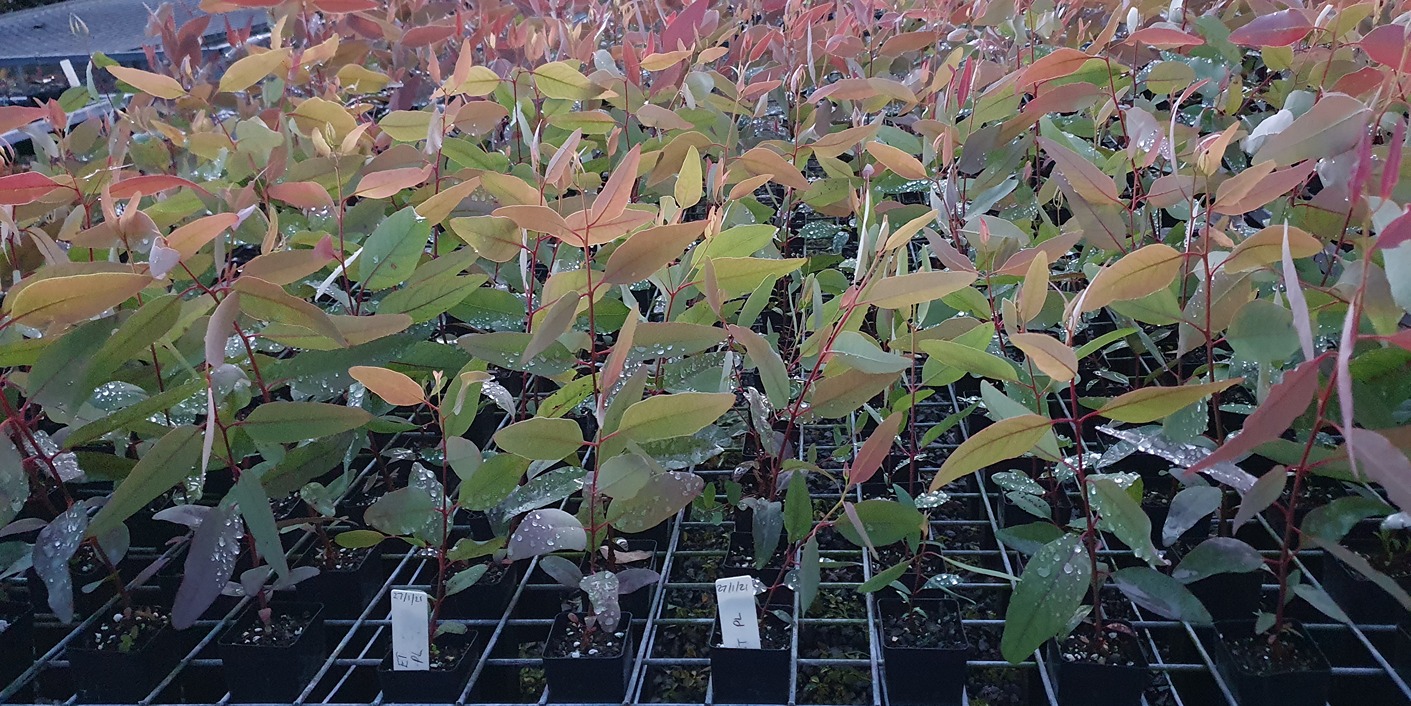Key points
- Rainforests are rich in biodiversity, and are important for helping to regulate the world’s water and oxygen cycles. They also provide natural beauty and recreation opportunities such as bushwalking and swimming.
- NSW is home to the World Heritage–listed Gondwana Rainforests of Australia, a series of rainforests in north-east NSW and south-east Queensland.
- Rainforests in Australia and around the world are greatly affected by climate change. Impacts include drought, bushfires, intense storms and changes to cloud cover.
- NSW has invested in adaptation planning and research to identify solutions for rainforests, including genetics research to help save rainforest species from the impacts of climate change.
The importance of rainforests in NSW
Rainforests are forests that have a canopy cover of at least 70%. Canopy refers to the upper layer of the forest, which affects the amount of sunlight reaching the forest floor. In rainforests, the closed canopy shades the forest floor and helps retain a moist microclimate. It also provides habitat for many animals.
Rainforests are classified as tropical, subtropical, warm temperate, cool temperate, littoral or dry, depending on their environment. These rainforest types have different structures and species, which have adapted to different climates and soils.
Rainforests are important ecosystems because they:
- contain significant biodiversity
- contain ancient lineages of plants and animals which tell us about the development of life on earth and retain significant genetic diversity
- absorb high levels of carbon dioxide and release oxygen
- support water cycles, both collecting and sharing water through transpiration
- help prevent flooding, soil loss and siltation.
Rainforests cover only about 0.3% of Australia, yet they contain about 50% of all Australian plant families and about 30% of Australia’s mammal and bird species.
NSW is home to important areas of the World Heritage–listed Gondwana Rainforests of Australia, a series of rainforests in north-east NSW and south-east Queensland. It contains:
- subtropical rainforest, warm temperate rainforest and cool temperate rainforest
- many plants and animals that are very similar to their ancient ancestors in the fossil record
- many rare and threatened species
- endemic and iconic species
- eroded craters of extinct shield volcanoes.
There are parts of 28 national parks and nature reserves in the Gondwana Rainforests, including the iconic Dorrigo, Barrington Tops, Gibraltar Range and Washpool, Border Ranges, Wollumbin and Nightcap national parks. These areas provide us with beauty, and opportunities for day hikes, picnics, swimming and birdwatching.
How rainforests are affected by climate change in NSW
Rainforests in Australia and around the world are greatly affected by climate change.
Rainforests in Australia are remnants of a vegetation type that once covered the whole continent when global climate conditions were wetter. As the climate warmed and dried, they contracted back to refuge areas.
Climate change is emerging as one of the greatest challenges for the protection of the Gondwana Rainforests. Climate change will likely result in:
- increased average temperatures in all seasons
- more hot days and warm spells with a substantial increase in the temperature reached on hot days
- more frequent and intense storms
- changes to the cloud base, mist availability, humidity or rainfall
- changes to fire regimes
- more invasive species and pathogens.
Further, and rapid, climate changes will affect a large number of plant and animal species. This is particularly important because these areas are already separated remnants with many unique, rare and threatened species.
As rainforests are generally wet or damp, they are not usually susceptible to bushfires. However, long periods of climate change–induced drought and increased temperatures is changing this. An example of this is the unprecedented bushfires in the spring and summer of 2019–20, which affected so many plants and animal species, including those within and dependent upon rainforests.
Climate change can affect the rainforest’s canopy cover through dieback during drought, or destruction by intense storms. Gaps in the canopy result in changes to the forest structure. This affects species that depend upon the shady, moist microclimate, and can result in increased weed invasion and long-term change in species composition.
Climate change also affects the rainforest's ability to contribute to evapotranspiration, which helps form clouds. If evapotranspiration is reduced, there will be less cloud cover, meaning less rainfall. Less rainfall may then continue to contribute to worsening drought conditions.
Adapting to changes in rainforests in NSW
NSW has invested in climate change adaptation for rainforests including research on the genetics of rainforest species to support restoration activities, such as Restore & Renew.
NSW Climate Refugia provides species habitat maps to inform management and decision-making.
Climate-ready revegetation: a guide for natural resource managers (version 2) is a compilation of the online tools available to help natural resource managers use climate projections and plan for the future in revegetation projects.
NSW is delivering an adaptation plan for the Tweed Caldera group of reserves within the Gondwana Rainforests of Australia. Activities will focus on:
- protecting the areas of rainforest and habitat that are climate change refugia
- genetically rescuing species to increase adaptation and resilience in the landscape
- identifying locations for insurance population to reduce the risk of extinction
- looking to support habitat protection with climate-ready revegetation programs.
Related information
- Gondwana Rainforests of Australia - NSW Department of Planning Industry and Environment
- Gondwana Rainforests of Australia - NSW National Parks and Wildlife Service
- Big Scrub Landcare
- IUCN World Heritage Outlook 2020


